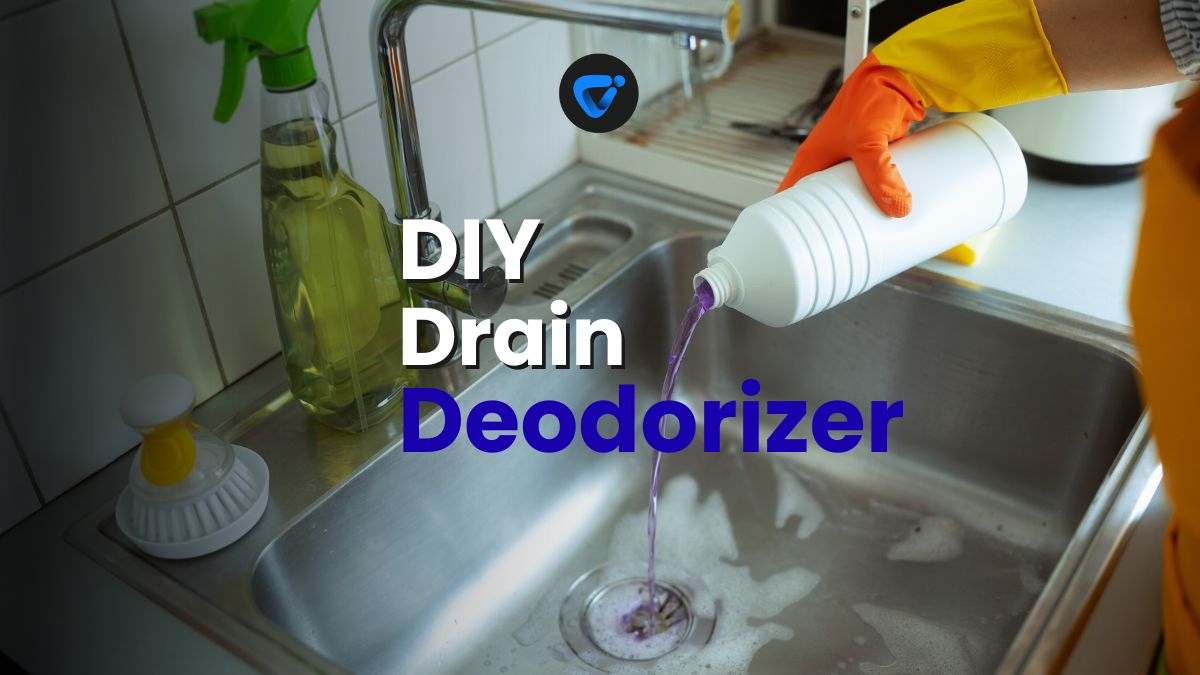
Fresh, clean air can transform the way a home feels to anyone stepping inside. When it comes to simple upgrades for your living space, air purifying plants work wonders both visually and functionally. Choosing these plants isn’t just about aesthetics—they offer meaningful air quality benefits that anyone can enjoy.

Composting Basics for Everyday Kitchen Scraps
Turn scraps into soil! Learn composting basics to recycle kitchen waste and create nutrient-rich compost at home.
Bringing air purifying plants indoors matters because daily routines introduce volatile organic compounds (VOCs) and dust, even in well-kept homes. Synthetic cleaners, cooking, and certain furnishings are routine sources. By showcasing these plants in common areas, bedrooms, and even kitchens, you create a healthier home environment.
Let’s dive into a comprehensive guide that answers your most practical questions and equips you to start, from plant selection to actionable care tips. Harness the power of air purifying plants with an approach anyone can use—regardless of gardening experience.
Choosing the Right Air Purifiers for Your Home’s Unique Needs
Targeting pollutants starts with picking air purifying plants that fit your daily habits, lighting, and maintenance style. Matching your space to a plant’s requirements makes a visible difference within weeks.
Matching plant type to room size and sunlight guarantees success. For example, select large-leafed specimens for living rooms and smaller, shade-tolerant versions for bathrooms or kitchens. Use natural grouping by placing two or three varieties together—this maximizes visual impact and filtration.
Spotting High-Traffic Zones for Maximum Impact
Most homes have a few rooms where activity rarely stops. Position air purifying plants near entryways, beside desks, or on shelving close to where laundry or cooking happens. This concentrates their cleaning power.
If you have pets or children rushing through hallways, anchor statement plants like snake plants in nooks to avoid tipping. In homes with little cross-ventilation, cluster small pots to improve coverage.
When guests visit, guide them toward seating near your green display. Casual conversation and air quality both benefit—guests may even copy your plant placement technique at home.
Simplifying Plant Selection with Reliable Favorites
Some air purifying plants thrive despite irregular watering or inconsistent sunlight. Sansevieria, pothos, and spider plants adapt quickly without a learning curve. If you’re not home all day, group these in self-watering pots.
To avoid the frustration of wilted leaves, opt for forgiving choices before moving to more demanding ferns or palms. Remind yourself that visible resilience is the number one factor when breaking routine.
Test different species in the same environment before committing. Rotate positions every two weeks and watch which plants perk up—adjust for sunlight and airflow as needed.
| Plant Name | Light Needed | Humidity Level | Best Room To Place | Takeaway Tip |
|---|---|---|---|---|
| Snake Plant | Low to Bright | Low | Bedroom | Needs minimal watering—great for beginners |
| Pothos | Medium | Average | Living Room | Trim regularly to keep it lush and full |
| Peace Lily | Low to Medium | High | Bathroom | Blooms with consistent moisture and shade |
| Spider Plant | Bright Indirect | Average | Kitchen | Propagate baby plants to expand displays |
| Boston Fern | Bright Indirect | High | Entryway | Mist leaves weekly—essential for crisp foliage |
Setting Up a Low-Maintenance Green Cleaning Support System
A practical plant placement and care strategy prevents frustration and delivers lasting results for indoor air. You’ll benefit long after the initial excitement of introducing air purifying plants fades.
Consistency matters. Water, prune, and rotate each specimen on a realistic schedule. Take cues from drooping leaves or slow growth—use them as reminders in your home cleaning and maintenance routine.
Tracking Home-Friendly Plant Habits
Routine creates reliability. Even if you’re not “a plant person,” recording your water and cleaning schedule ensures steady growth. Write down watering days on your calendar or set reminder alarms for feeding and misting.
- Check soil by touch: Stick your finger about an inch into the soil. If it feels dry, it’s watering time. This prevents overwatering and root rot quickly.
- Clean leaves gently: Wipe with a damp cloth weekly. Clean leaves let plants absorb light and filter air more efficiently, improving results almost immediately.
- Rotate pots: Every two weeks, turn each pot 90 degrees. This keeps stems upright and distributes sunlight evenly, leading to balanced foliage growth without sunburn spots.
- Repot when roots appear: When you see roots at drainage holes, move plants to larger pots. This boosts growth and density, keeping their air-purifying ability strong.
- Add humidity trays: Place water-filled trays with pebbles near plant bases. This offsets dry indoor air, minimizing brown tips and keeping foliage lush.
Building these habits means seeing visible, positive changes within the first month—your air feels fresher and your rooms look more inviting day by day.
Supporting Plant Vitality Through Seasonal Care
Plant needs change with every season. Less daylight in winter means reduced watering and no fertilizer. Spring and summer call for more water, occasional feeding, and closer sunlight monitoring.
- Move plants from drafts: Keep greenery away from heating vents in winter and direct air conditioner currents in summer. Consistent temperature equals steady growth.
- Prune dead leaves: Snip yellowing or wilted foliage as soon as it appears. This prevents pest buildup and channels energy to healthy growth, ensuring vibrant air purifying plants year-round.
- Switch light sources: Supplement low winter sunlight with high-quality LED grow lights. Place lamps at the recommended height to avoid stretching and pale leaves during darker months.
- Refresh topsoil: In early spring, swap out the top inch of soil. This removes salt build-up and delivers fresh nutrients, fueling new leaf development and keeping air cleaning functions optimal.
- Increase humidity: During dry spells, mist foliage or place groupings closer together. This prevents browning and supports lush, vibrant air purifying plants in all seasons.
Seasonal routines quickly become second nature, anchoring these green routines right alongside your cleaning habits.
Pairing Plants for Maximum Filtering Power in Each Room
Combining varieties leverages the unique filtering abilities of each type. Pairing multiple air purifying plants by their strengths gives each room a specialized function and style boost.
For bedrooms, combine snake plants with aloe vera to tackle nighttime carbon dioxide and boost oxygen. Kitchens get a lift from fast-growing spider plants paired with pothos, because these absorb kitchen fumes efficiently.
Layering Foliage Heights for Dense Air Coverage
Place tall palms or rubber trees near walls, flanked by mid-size peace lilies or ferns for coverage in high-traffic zones. Layer in trailing pothos to cascade from shelves, expanding their reach without taking up valuable floor space.
This tiered approach works like a natural barrier, intercepting airborne particles from surfaces and human activity. Think of it as forming an invisible shield that constantly circulates clean air in frequently used spaces.
To copy this effect, sketch a quick room plan and then shop for three sizes: tall, bushy, and trailing. Set up, check light, and enjoy tangible air improvements with minimal fuss.
Balancing Form and Function in Small Spaces
Even compact apartments welcome cleaner air. Attach small planters to kitchen rails or window sills filled with compact herbs like basil and mint. Not only do these air purifying plants help with freshness, they’re useful for recipes too.
If you’re working with tight spaces, introduce vertical shelves or wall-mounted containers. Place compact, hardworking varieties such as spider plants and ZZ plants at eye level for the most visual and functional impact.
Quick, actionable tip: Before your cleaning sessions, check that plant leaves aren’t blocking switches or outlets. This micro-adjustment ensures the whole system is both safe and seamless with daily routines.
Turning Routine Plant Care Into Part of Your Cleaning Rituals
Directly pairing air purifying plant care with your cleaning routines builds consistency. Small changes in your cleaning schedule reinforce healthy plant habits for durable results.
Instead of viewing watering and dusting as chores, fold them into activities you’re already doing. If you vacuum every Saturday, spend three minutes afterward wiping plant leaves and checking soil moisture for a complete freshening reset.
Checking Plant Health as Part of Weekly Walkthroughs
Walking through your home with a cloth and spray bottle encourages careful observation. Scan each air purifying plant for drooping leaves or dusty stems, then quickly address any issues before they escalate.
Every time you swap out towels or linens, pause to turn planters so all sides receive equal sunshine. If needed, write short plant health notes in your cleaning planner—little reminders keep your air purifying plants thriving.
If you spot any sticky residue or webbing, act quickly: isolate the plant, treat it, and sanitize surfaces. A thorough approach like this maintains a pest-free, efficient air filtering ecosystem for everyone.
Micro-Upgrades That Blend Greenery and Cleaning Tools
Store a mini spray bottle or soft cloth near each cluster of air purifying plants. This keeps supplies visible so you never forget a quick leaf wipe. Use the same caddy as your regular cleaning gear.
Switch to homemade plant misters using distilled water and a drop of natural liquid soap. This dual-purpose spray supports both dusting and gentle foliar feeding once per month—your plants and air benefit with each pass.
If you clean windows, mist nearby plant leaves at the same time. Pairing these little habits cuts time and maximizes rewards, keeping both air and décor spotless in sync.
Addressing Common Plant Challenges With Practical Fixes
Every household deals with the ups and downs of keeping air purifying plants healthy. The best results come from recognizing signals and making simple, reliable adjustments.
Crispy leaf edges point to low humidity levels. Set a dish of water near plants or group pots together for a quick remedy. If new growth looks pale, check lighting and rotate pots more frequently until improvement appears.
Maintaining Motivation With Small Successes
Mark your calendar when you notice a new leaf, glossy shine, or a visible reduction in household dust. Small milestones reinforce daily care. Share before-and-after photos to celebrate progress and keep motivation high.
Notice changes in household comfort—less sneezing, fresher scents, and lower dust buildup—just a few benefits of committed air purifying plant maintenance. Use positive results to anchor plant routines as permanent habits.
If friends visit and compliment the air or greenery, schedule a short demonstration. Show which care technique works for you, offering step-by-step scripts easy to follow (“I water these plants every Sunday morning right after breakfast”).
Pivoting Quickly When Issues Arise
If you spot mold or pests, act on a next-step sequence instead of delaying. Begin by quarantining affected plants, wiping leaves, and using homemade, nontoxic sprays. Clean nearby surfaces as you go.
Record what triggers issues—drafts, forgotten waterings, blocked light—and correct them directly. Minor tweaks, such as moving a plant or adjusting feeding times, yield faster recovery than drastic changes.
If a solution stalls, consult with gardening groups or knowledgeable neighbors. Their advice, rooted in hands-on experience, often simplifies troubleshooting and helps keep every air purifying plant in top form.
Refreshing Every Room Efficiently With Green Scents and Cleaner Air
Introduce air purifying plants into every area—bedroom, bathroom, kitchen, and entryway—by matching plant variety to a room’s unique needs. For bathrooms, moisture-loving ferns flourish. Bedrooms benefit from gentle, low-light species like snake plants.
In the kitchen, herbal choices double as culinary aids and air cleaners. Use basil or mint for cooking, placing pots in bright windows. Entryways thrive with upright, statement varieties that greet guests with cleaner air upon arrival.
Blending Greenery With Other Home Cleaning Strategies
Tag team plant care with daily dusting, mopping, or eco-friendly spray routines. Each pass removes surface contaminants, helping air purifying plants absorb airborne particles even more efficiently. This synergy boosts the entire home’s air quality.
Try swapping synthetic air fresheners for plant groupings with natural scents—think eucalyptus or mint. Every cleaning cycle freshens both air and your mood, avoiding harsh chemicals and reinforcing healthy routines in every room.
Setting Visual Anchors as Energy Boosters
Place a dramatic monstera or trailing heartleaf philodendron by the windowsill—a reminder that the natural look signals cleanliness and fresh energy. Guests and family members instantly connect greenery with comfort.
Visual greening works almost like having an open window year-round, but without worrying about seasonal allergens or temperature swings. Use clustered, healthy air purifying plants as a visual cue that tidiness and indoor air go together.
Enhancing Home Comfort and Cleaning With Air Purifying Plants
Air purifying plants effortlessly merge beauty with function, quietly refreshing every corner of your home. They’re visible proof that micro-cleaning routines have far-reaching benefits. Small weekly habits lead to larger health and wellness impacts in daily life.
As part of your cleaning toolkit, air purifying plants add more than meets the eye—they anchor schedules, stabilize humidity, and serve as natural reminders to care for your home’s air. Every room’s routine improves when greenery joins your process.
Welcoming these living air filters as part of a regular home cleaning and maintenance system cultivates a greener, cleaner, and healthier household. The difference is tangible, sustainable, and achievable for anyone, regardless of gardening experience.
Frequently Asked Questions
Begin with snake plants, pothos, or spider plants. They thrive on minimal care—just water when the soil feels dry, provide moderate light, and dust occasionally. These are reliable choices for busy lifestyles and instantly improve indoor air quality.
For noticeable results, place at least one medium-sized air purifying plant per 100 square feet. Grouping several in high-traffic areas or rooms where you spend the most time boosts their effect and provides a clear improvement in household freshness.
Yes, certain varieties filter airborne particles, lowering overall dust and chemical buildup indoors. Boston ferns and peace lilies are especially helpful. However, routinely cleaning leaves and the plants’ surrounding areas is key to maintaining strong results.
Air purifying plants require less water in winter but benefit from extra humidity and artificial light. Protect them from drafts, mist more frequently, and rotate pots for balanced growth. Watch for dry leaves and make small adjustments as needed.
Pair watering and leaf-wiping with existing routines, like vacuuming or dusting. Keeping supplies nearby—such as spray bottles or cloths—makes the process seamless. Observe plant health as you tidy, so both cleaning and air quality tasks become second nature.

DIY Drain Deodorizer with Everyday Pantry Items
Freshen your sink fast! Make a DIY drain deodorizer with simple pantry items for a clean, odor-free kitchen.


